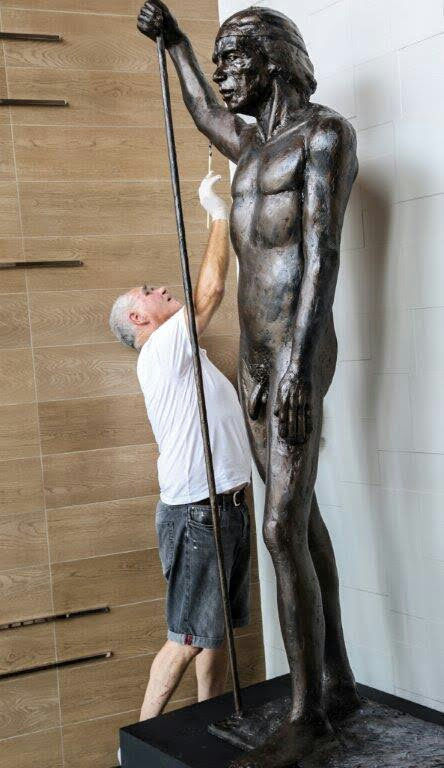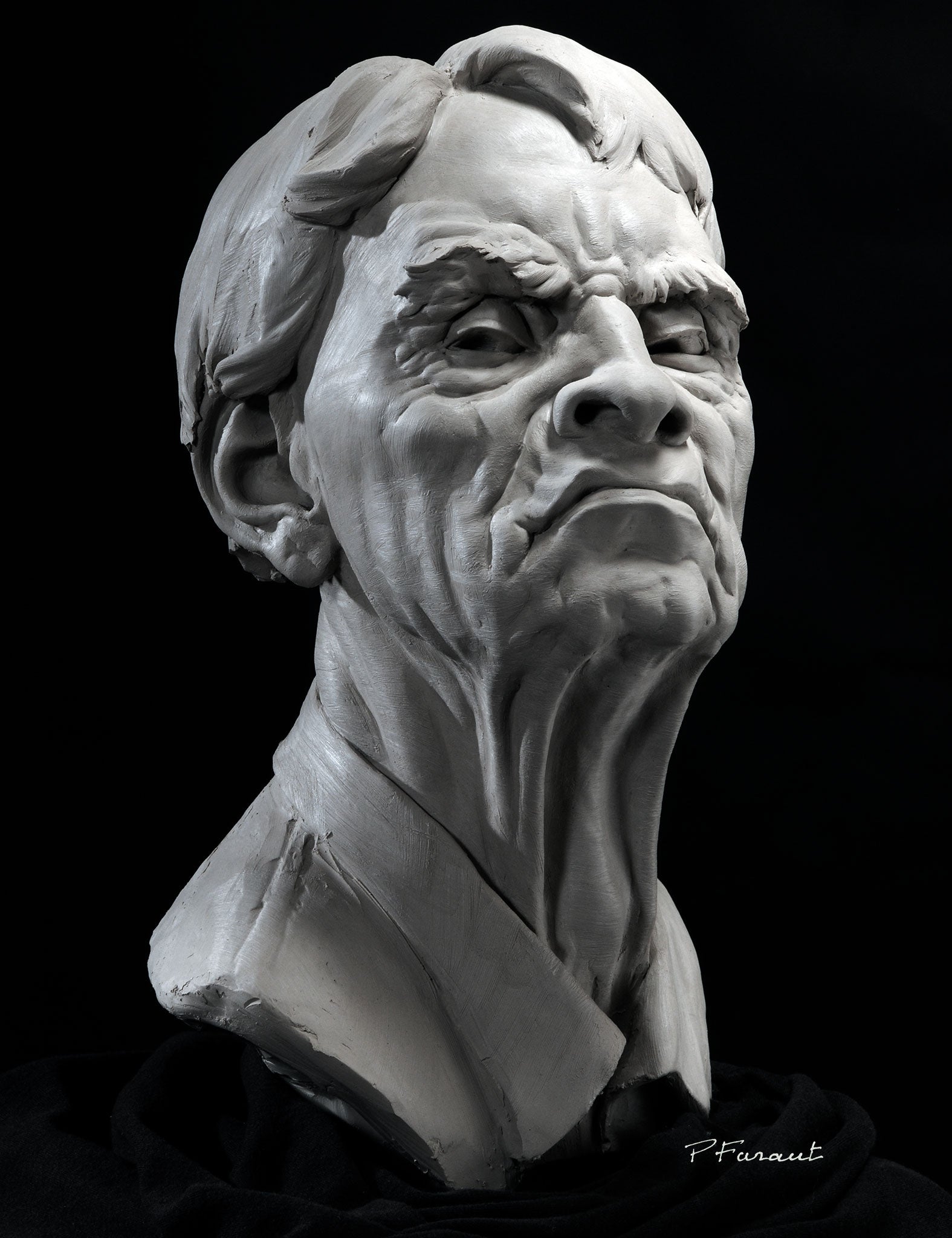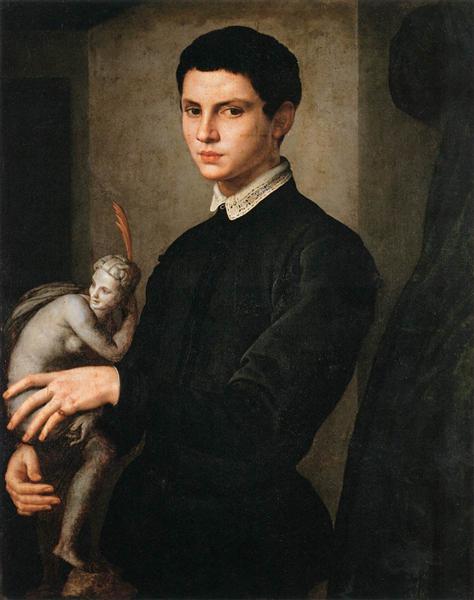Eternal Beauty in Bronze: Unveiling the Art of Bronze Sculptures
Wiki Article
The Evolution of Sculptures: From Ancient to Modern
The Development of Sculptures: From Old to Modern.Sculpture, among the oldest kinds of art, has actually been an important component of human civilization for millennia (Robert C Hitchcock Sculptor). From the ancient human beings of Egypt and Greece to the modern age, sculptures have actually developed, reflecting adjustments in creative strategies, materials, and cultural influences. This journey via time traces the development of sculptures, checking out the changes in style, subject matter, and creative expression
Starting with the ancient globe, sculptures crafted from stone and later bronze captured the significance of deities, rulers, and day-to-day life. The Renaissance duration observed a revival of classic sculpting techniques, as musicians looked for to emulate the stylish forms of ancient Greek and Roman sculptures. In the modern era, artists challenged typical borders, welcoming abstraction and experimentation with new materials.

This exploration will certainly dig right into the diverse development of sculptures, disclosing the rich tapestry of artistic expression throughout different durations and societies.
Ancient Sculptures: From Stone to Bronze
Ancient sculptures transitioned from being sculpted out of stone to being cast in bronze. This change marked a significant advancement in the art of sculpture, permitting better refinement and information in the completed works. Stone sculptures, while impressive in their very own right, were limited by the nature of the product. Rock needed extensive shaping and sculpting, often resulting in a much more streamlined depiction of the subject.The introduction of bronze as a medium for sculptures produced a revolution in imaginative expression. Bronze used sculptors the possibility to produce elaborate and natural kinds that were not possible with stone. The process of casting bronze permitted the production of numerous duplicates of a sculpture, making it possible for broader distribution and conservation of these artistic work of arts.
The shift from stone to bronze likewise saw a shift in the subject of sculptures. While rock sculptures primarily illustrated gods, goddesses, and mythical numbers, bronze sculptures started to reflect a broader variety of subjects, consisting of day-to-day individuals and pets. This development of subject issue showcased the adaptability and adaptability of the bronze tool.
Renaissance Rebirth: Sculpting in the Timeless Design
The Renaissance rebirth of sculpture observed a revival in the classic design, building upon the innovations made during the change from rock to bronze in old sculptures. During this duration, musicians sought to recreate the classic visual and perfects of charm that prevailed in old Greek and Roman sculptures.One of the vital characteristics of the Renaissance resurgence was the focus on naturalism and the human form. Sculptors like Donatello and Michelangelo aim to catch the physiological details and expressions of their subjects with unprecedented accuracy. They examined the human body and incorporated their observations right into their sculptures, leading to realistic and lifelike depictions.
Another crucial element of the Renaissance resurgence was the expedition of perspective and depth. Musicians utilized strategies such as contrapposto, where the weight of the body is changed away, creating a feeling of activity and dynamism. They likewise try out various materials, including marble and bronze, to attain a degree of refinement and complexity in their sculptures.
The classic style of the Renaissance resurgence had an extensive impact on later durations of art, acting as a foundation for the development of Western sculpture. It brought a restored appreciation for the beauty and grandeur of the human type, and its heritage can still be seen in contemporary sculptures today.
Modernism and the Avant-Garde: Damaging Traditional Boundaries

One of the key characteristics of modernist sculpture was the focus on abstraction. Sculptors relocated away from practical representations and rather concentrated on catching the significance of the topic through simplified kinds and geometric forms. This separation from typical depiction permitted musicians to reveal their feelings and concepts in a much more subjective and personal fashion.
Furthermore, the progressive motion challenged societal standards and conventions, urging musicians to experiment and push the boundaries of their art - Contemporary Sculptures. Sculptors started integrating non-traditional products such as discovered objects, industrial materials, and also natural environments into their work. This expedition of new materials and strategies not only broadened the opportunities for sculpture however likewise tested the standard ideas of what could be taken into consideration art
Contemporary Sculptures: Discovering New Products and Concepts
With an emphasis on discovering brand-new materials and principles, contemporary sculptures have reinvented the field of art. Artists today are pushing the boundaries of standard sculpture by experimenting and utilizing ingenious materials with abstract ideas. These sculptures test standard concepts of significance, materiality, and kind, inviting viewers to engage in a thought-provoking and brand-new imaginative experience.Contemporary artists are accepting a wide variety of materials, consisting of plastic, glass, metal, and even raw material. Equine Sculptures. They are not restricted to the conventional medium of stone or clay, permitting better freedom of expression and trial and error. This shift in the direction of unique materials has actually opened new opportunities for artists to produce sculptures that are vibrant, interactive, and aesthetically striking
In addition to discovering new materials, contemporary sculptures likewise explore facility and abstract concepts. Musicians are now discovering themes such as identification, social concerns, and the environment, making use of sculpture as an effective tool for social discourse and self-contemplation. These sculptures test customers to believe seriously and engage with that site art on a much deeper level, stimulating conversations and prompting psychological responses.
International Impacts: Sculptural Customs From Around the World

In old Egypt, sculptures were produced mostly for funerary and religious purposes. The famous sculptures of gods and pharaohs, such as the Great Sphinx and the breast of Queen Nefertiti, showcase the Egyptians' mastery of rock sculpting and their idea in the afterlife.
In old Greece, sculpture reached its top during the classical period. Influenced by the perfects of harmony, charm, and percentage, Greek sculptures stressed the human kind and commemorated the success of professional athletes, gods, and heroes. The renowned sculptures of Aphrodite of Knidos and the Discobolus exemplify the Greeks' pursuit of excellence in sculptural art.
In ancient Rome, sculpture served both creative and political objectives. Equine Sculptures. Roman sculptures commonly shown emperors, generals, and mythical figures, reflecting the power and grandeur of the empire. The marble sculpture of Augustus of Prima Porta and the huge Arch of Constantine are remarkable examples of Roman sculptural achievements
Eastern sculptural traditions, specifically in India, China, and Japan, have also had an extensive influence on the evolution of sculptures. Japanese sculptures, affected by Buddhism, stress simpleness and peace, seen in the tranquil statues of Buddha and the classy art of bonsai.
The international influences on sculpture remain to develop in the contemporary period. Artists today attract ideas from different sculptural practices, incorporating new materials, techniques, and ideas to create thought-provoking and cutting-edge art work. The blend of various social influences has triggered a varied and dynamic sculptural landscape, reflecting the interconnectedness of our international culture. As we look to the future, it is certain that the worldwide influences on sculpture will certainly proceed to form and redefine this old art form.
Conclusion
In verdict, the development of sculptures has seen a change from old stone and bronze works to the classic resurgence throughout the Renaissance. Today, contemporary sculptures discover brand-new materials and principles, while likewise attracting inspiration from global sculptural practices - Robert C Hitchcock Sculptor.From the old worlds of Egypt and Greece to the modern period, sculptures have actually developed, reflecting changes in creative strategies, products, and cultural influences.Starting with the ancient globe, sculptures crafted from rock and later on bronze caught the significance of deities, rulers, and day-to-day life.Ancient sculptures transitioned from being carved out of rock to being cast in bronze. While stone sculptures mostly depicted gods, goddesses, and mythological numbers, bronze sculptures began to reflect a more comprehensive variety of subjects, including day-to-day individuals and animals.In final thought, the advancement of sculptures has seen a shift from old rock and bronze works to the timeless rebirth during the Renaissance.
Report this wiki page